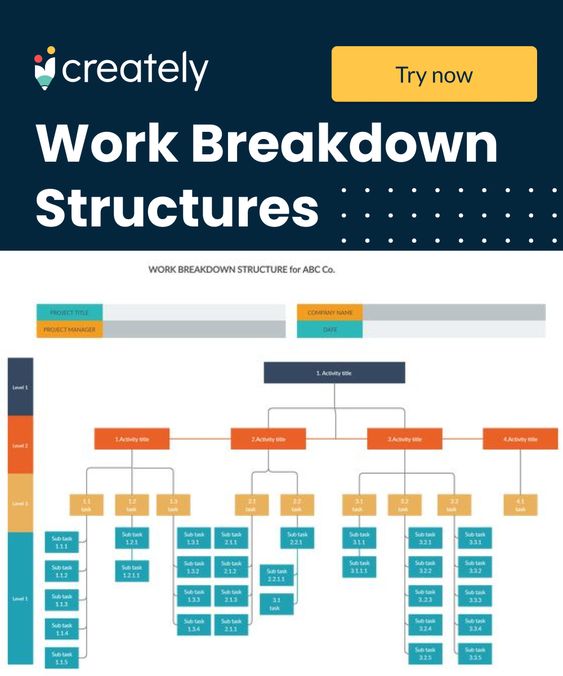A Work Breakdown Structure (WBS) is a project management tool that is used to break down a complex project into smaller, more manageable tasks. It is a hierarchical decomposition of the work that needs to be done in order to achieve the project’s objectives. WBS provides a clear, concise, and organized view of a project’s scope, making it easier for project managers to plan, schedule, and allocate resources.
Benefits of WBS
- Improved project visibility WBS helps project managers to see the entire project scope in a clear and organized manner, making it easier to identify dependencies, anticipate problems, and track progress.
- Better project estimation WBS allows project managers to break down a project into smaller, more manageable tasks, making it easier to estimate the time and resources required to complete each task.
- Better resource allocation WBS enables project managers to allocate resources more effectively, as they can see exactly what tasks are required and how much time and resources are needed for each task.
- Improved project control WBS provides a framework for tracking progress and monitoring the project against the original plan. This makes it easier for project managers to identify any deviations from the plan and take corrective action.
Steps to Develop a WBS
- Define the project scope The first step in developing a WBS is to define the project scope, including the project objectives, deliverables, and constraints.
- Identify the major tasks Once the project scope has been defined, the next step is to identify the major tasks that need to be completed in order to achieve the project objectives.
- Decompose the major tasks The next step is to break down the major tasks into smaller, more manageable tasks. This process is known as decomposition and should continue until each task is small enough to be easily managed.
- Assign unique identifiers to each task Each task in the WBS should be assigned a unique identifier, such as a number or code, to ensure that it can be easily tracked and referenced.
- Validate the WBS Once the WBS has been developed, it is important to validate it to ensure that it accurately reflects the project scope and that all tasks have been identified. This can be done by reviewing the WBS with stakeholders and subject matter experts.
Best Practices for WBS
- Keep it simple The WBS should be simple and easy to understand, with a clear hierarchy and well-defined tasks. Avoid creating overly complex or detailed WBS, as this can make it difficult to manage the project.
- Use a consistent format The WBS should be created using a consistent format, such as a numbered or coded list, to ensure that it is easy to read and understand.
- Include all relevant tasks The WBS should include all relevant tasks, from the major tasks down to the smallest, most detailed tasks. Avoid excluding tasks, as this can lead to project scope creep and result in additional costs and delays.
- Involve stakeholders Involving stakeholders in the development of the WBS can help to ensure that all relevant tasks have been identified and that the WBS accurately reflects the project scope.
You might find these FREE courses useful:
Conclusion
A Work Breakdown Structure (WBS) is an essential project management tool that provides a clear and organized view of a project’s scope. By breaking down a project into smaller, more manageable tasks, WBS makes it easier for project managers to plan, schedule, and allocate resources. When developing a WBS, it is important to follow best practices.


